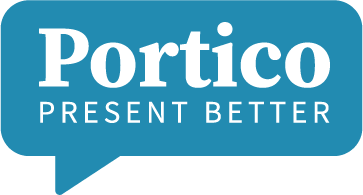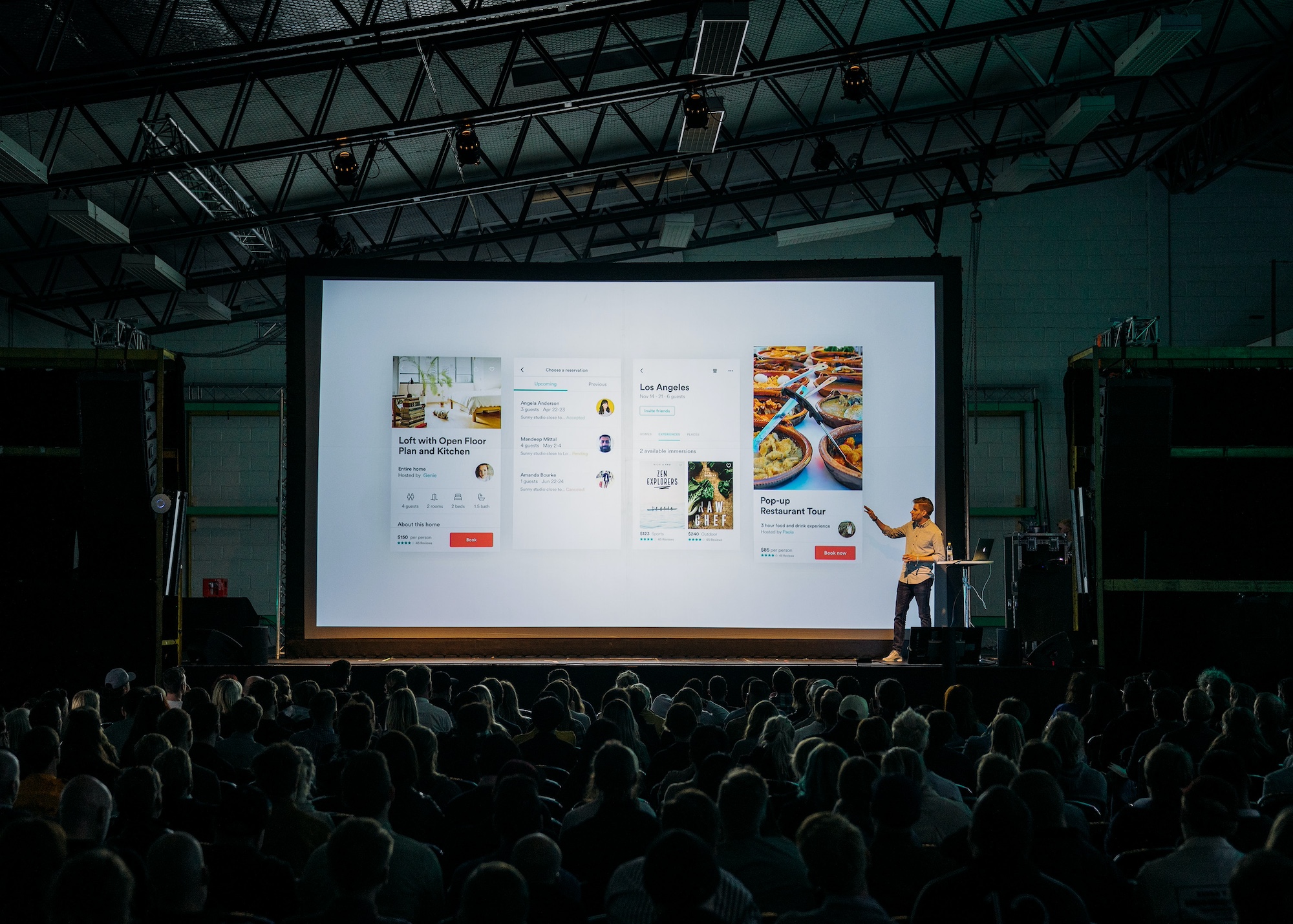Depending on your music preferences, “It Takes 2” might recall songs by Rob Base & DJ E-Z Rock or Marvin Gaye. I reference these catchy songs in the hopes that you’ll remember this concept when organizing your next major conference.
When it comes to the materials you present in an auditorium setting, it takes 2 decks. The first is your presentation, also referred to as the projection deck. Based on research from the godfather of multimedia learning, Richard Mayer, PhD, we know that written text on a slide competes with what we’re saying. (It’s impossible for us to read and listen at the same time; we always choose reading over listening. Just ask your brain.) Instead of inserting row after row of bullets, we use images or clearly defined charts, because Professor Mayer also reveals that images reinforce our words.
As a result, the deck that we present captures a portion of the information we want to convey. The bulk of information comes from the presenter. We provide context for charts and data, and we engage our audience in a conversational manner. If we want to reinforce what we’ve said, it is helpful to provide a follow-up document. This kind of spaced repetition increases the likelihood that our audience will remember what we’ve said. (For more on ways to reinforce learning, read Brain Rules by John Medina, Ph.D. and Make it Stick by Peter Brown, Henry L. Roediger, Ph.D and Mark McDaniel, Ph.D.).
Your projection deck is not the leave behind. Capture the outline of your presentation, inserting any relevant charts or data, into a 1 or 2 page summary deck or document. It can function as a stand-alone document; it includes the context provided in spoken word by the presenter. Think of it as more of a memo and less of a PPT.
This post was inspired by a conversation with a law firm partner who attended one of my Presentation Academy workshops. She applied the multimedia learning and design techniques to her next presentation for a major industry conference. The conference organizer balked when he received the deck, replying, “As an expert in your field, we expected something of more substance from you. We wanted to give the deck to those people who might not be able to attend your session and this tells them very little. We need more bullets, more text.”
A professional event organizer is asking the speaker for more bullets. (Has he surveyed an audience to ask how they feel about being read to?) This is my attempt to make the case for 2 documents to conference organizers and presenters:
Conference organizers: Think of the time, paper, toner and storage space we’ll save by replacing the leave behind deck with a leave behind summary? How much more grateful and energized will your audiences be when they can focus on the presenter? Imagine their joy when they receive a concise summary of what they heard after the event?
Presenters: How great will it feel to be a presentation rock star?
It takes 2.



